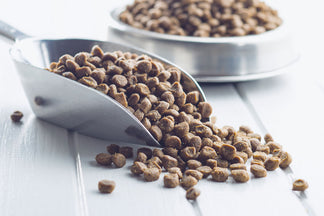Over the years, there has been a lot of confusion, or at least uncertainty, about proper diets for senior dogs. In a 2011 study by the Cummings School of Veterinary Medicine at Tufts University, researchers polled more than 1,300 people online about their perceptions about senior foods. According to the authors:
“The study illustrates a great deal of confusion in the marketplace, and it’s important for owners to be aware that every “senior diet” is different and so may or may not be appropriate for an individual dog, depending upon his or her body condition and health.”
It is important for pet owners to be able to understand the keys for feeding their senior pets, and to be able to cut through the marketing messages and old school thinking, to make better food choices that will keep their dogs living longer and healthier lives.
This article is the first in a series of articles that will discuss the key issues and key ingredients that are important for overall senior health.
Do Senior Dogs Require Less or More Protein?
One of the longstanding myths about senior diets is that they should be lower in protein than diets of younger pets. In fact, the average senior dog food is markedly higher in carb content and lower in protein and fat than non-senior formulations. The question remains, is this a valid and appropriate dietary change or not. I think not.
According to many leading veterinarians and veterinarian schools, the current thinking is that older pets will actually require MORE protein than younger pets (see below for references). One of the leaders in this change in thinking, Dr. Delmar Finco, a veterinary nutritionist, discovered protein requirements actually increase as pets’ age and that higher protein diets were associated with greater life spans. Indeed, senior dogs need ample amounts of high quality protein in order to maintain muscle mass and proper organ and immune function.
One of the plausible explanations for how the myth of the appropriateness of low protein diets for seniors came about is due to the history of pet food. 50 or 60 years ago, the pet food industry was devoid of high quality products. Although the overall protein levels in pet foods might have been acceptable, the quality of the proteins was very low grade, either in the form of low digestible by-products or in the form of fillers and grains. Feeding a dog these lower quality foods over time could, indeed, cause health issues and the ‘solution’ was to lower the protein amounts to address the associated liver and kidney problems from feeding these foods. Thus, pet food companies created lower protein, higher carbohydrate, and (often) lower calorie foods that were meant for senior pets.
We now know that ample amounts of high quality, digestible proteins are exactly what senior dogs need. Unfortunately, most senior diet foods are still marketed as appropriate for seniors, yet are low in protein and fat and high in carbs.


 Food
Food
 Food
Food
 Food
Food
